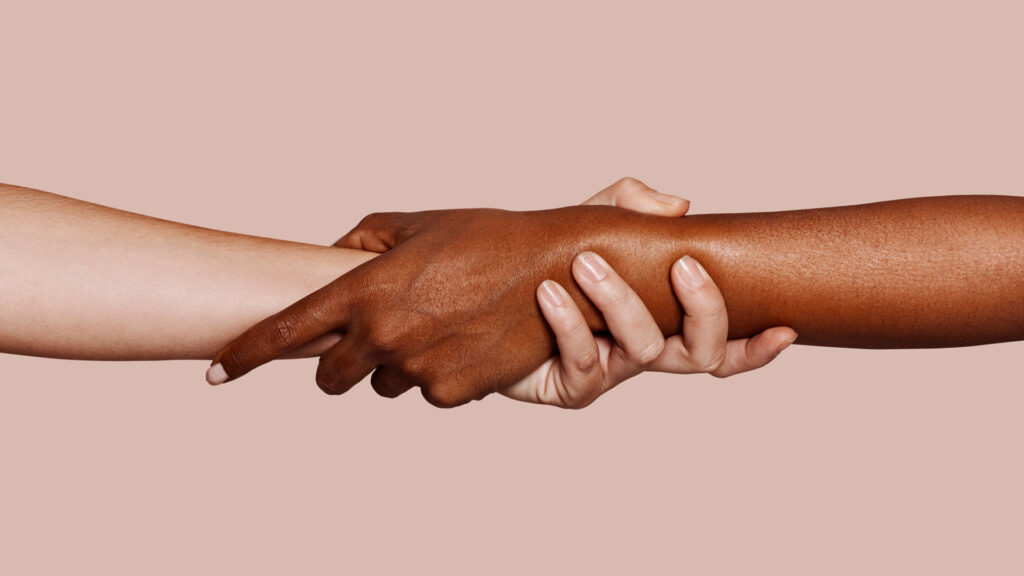Infertility stigma persists, and women+ are bearing the brunt
- READING TIME 7 MIN
- PUBLISHED November 02, 2023
- AUTHOR Donna
Key takeaways
- Infertility is defined as failure to achieve pregnancy after 12 months of regular unprotected sex.
- Infertility is a female and male problem but the burden of infertility still weighs heavily on women+ who feel they’re more often blamed for it than men.
- Stigma can have damaging social and psychological consequences, from exclusion and divorce to social stigma that leads to isolation and stress.
Infertility stigma persists, and women+ are bearing the brunt
The burden of infertility weighs heavily on women+ and it can lead to anxiety, stress and insolation. But we are hopeful – public awareness of menstrual health is increasing and fertility science is advancing quickly.
“I always think that because I cannot have children, I am lower than others. This idea really bothers me,” a 34-year-old Iranian describes her feelings of living with decade-long infertility issues. The young woman was one of the participants in the 2021 Iranian survey that tracked the experiences of women+ with infertility issues in this Asian country.
Her response, however, could easily be heard in any other country or continent. The pressure to have your own children is universal and felt especially by women+. Although infertility is common, it is still highly stigmatized and often leads to shame and secrecy.
It also remains a highly sensitive topic and the discussions about its implications have only recently emerged in public forums and in social media. This is a hopeful sign – we believe that only by open discussion, with candour and realism, we’ll be able to create an environment more welcoming for people who can’t or don’t want to have kids.
Infertility defined
In clinical terms, infertility is defined as failure to achieve pregnancy after 12 months of regular unprotected sex. 1 In general, 8 to 12 percent of couples of reproductive age suffer from infertility worldwide. 2 Among women+, more than 10 percent are affected. 3
Most female infertility stem from a physiological cause – a result of biology’s indisputable fact that you’re born with a fixed number of eggs that decline as you age. For women+, fertility capability diminishes significantly after 35 and for men, around the age 40 to 45 years. 4 5 6
Most common culprits for infertility are ovulation problems, hormonal imbalances and structural issues, such as blocked Fallopian tubes or uterine fibroids. Endometriosis and polycystic ovarian syndrome can also affect the ability to get pregnant. The latter is a hormonal disorder and endometriosis is a condition in which tissue similar to the tissue that lines the inside of your womb grows outside the uterus. Finally, a variety of lifestyle factors influence your fertility, too, including smoking, diet and alcohol consumption. 7 8 9 Jump over to our dedicated article to learn more about what causes infertility and infertility treatments.

It’s a problem for both genders
Infertility is a female and male problem. Around 30 percent of all cases of infertility are due to female factors alone, 30 percent are due to male fertility factors alone, 30 percent are a results to a combination of both, and the remaining 10 percent are attributed to unexplained reasons. 10
Despite these facts, the burden on infertility weighs heavily on women+ who feel they’re more often blamed for it than men. One recent research found that the perception of social exclusion was present in 43 percent of women+ and in 29 percent in men+. 11 Similarly, another survey found that 40 percent of women+ fertility problems believe that society will think less of a women+ who can’t have kids and 45 percent think that stereotypes about infertility have affected them personally. 12
Effects on mental health
Infertility stigma can have damaging social and psychological consequences, from exclusion and divorce to social stigma that leads to isolation and stress. It may cause women+ to feel guilty and it threatens their self-esteem. 1314
Women+ describe feelings of shame and inferiority, worthlessness and losing control. Some are afraid of divorce and separation, especially in Asian and African societies. In worst cases, women+ are verbally humiliated, blamed for their condition and being called sterile. Verbal sarcasm and terms such as fruitless tree or barren land are typical insults. 15161718
Being stigmatized can be in fact more painful than infertility itself. In the Modern Fertility survey, 60 percent of participants said they felt anxious about their fertility. 19 Studies have even shown that women+ trying to conceive have the same levels of anxiety and depression as women+ with cancer, AIDS, and heart disease. 20
Infertility has been especially stigmatized in developing countries where bearing children is central to women’s+ identity. 21 In some African countries, for instance, there is pressure to prove fertility soon after marriage and menstruation is regarded as a ‘bad sickness’. 22
In cultures with no concept of voluntary childfree life, it is impossible to hide infertility. Women+ are harassed mentally and physically and the blame of not being able to bear a child is solely on them. 23

Remember, you’re not alone
People react differently to stigma. Some use defensive mechanisms – hiding infertility behind the mask, ending up facing the problem alone, which can make people even more anxious. The fear that their secret might be revealed only increases tension and produces feelings of guilt.
Luckily, it doesn’t have to be that way. Although society’s pressure weighs, many can find support in partners, family, especially mothers, and groups of other women+ who also face infertility symptoms and issues. In fact – peer support has a crucial role in therapeutic services, adding mental health perspective to formal treatment. When patients support each other, they find a community that can take away the stigma and loneliness of infertility. Health care professionals suggest that women+ facing infertility issues communicate with family and friends and avoid isolating themselves. At the same time, it’s equally important to practice self-care by getting enough sleep, exercising and dedicating time for yourself. 2425
Furthermore, information is much more readily accessible today. The internet has opened doors to incredible collections of resources about the causes of infertility and infertility treatment possibilities. Women+ say themselves they want more information, particularly about factors that decrease fertility and the impact of their hormones. 26
At the same time, many find encouragement and motivation when influencers and celebrities go public with their experiences. Michelle Obama, for instance, shared her struggles with miscarriage. She said she felt like she failed because she didn’t know how common miscarriages were “because we don’t talk about them”. As so many women+ do, she perceived herself as broken. Michelle and former President Barack Obama were able to have their daughters, Sasha and Malia, through IVF treatment, when Michelle was in her mid-30s.
Infertility treatments
And finally, infertility doesn’t mean the end of a dream to become a parent. Just because you have difficulties getting pregnant doesn’t mean it’s going to last. Most patients who struggle with infertility will eventually will become pregnant – in many cases, thanks to amazing advancements in fertility technology.
Treatments range from medications that stimulate ovulation, surgery to repair uterine problems or intrauterine insemination. You may need to undertake assisted reproductive technologies, such as IVF, donor eggs and sperm, or a surrogate. Egg freezing, too, represents a new wave of freedom for those choosing to delay parenthood for any personal reasons. 272829
Step by step to a more understanding world
There is still a long way until infertility taboos and stigmas that people who can’t have their own kids face will become a thing of the past. But every time someone spotlights these struggles and injustices, we’re one step closer to a more understanding world.
REFERENCES
- https://www.who.int/news-room/fact-sheets/detail/infertility
- https://pubmed.ncbi.nlm.nih.gov/32446954/
- https://www.who.int/reproductivehealth/topics/infertility/perspective/en/
- https://www.betterhealth.vic.gov.au/health/conditionsandtreatments/age-and-fertility
- https://www.britishfertilitysociety.org.uk/fei/at-what-age-does-fertility-begin-to-decrease/
- https://www.acog.org/Patients/FAQs/Having-a-Baby-After-Age-35-How-Aging-Affects-Fertility-and-Pregnancy?IsMobileSet=false
- https://www.frontiersin.org/articles/10.3389/fendo.2019.00346/full
- https://www.ncbi.nlm.nih.gov/pmc/articles/PMC5504800/
- https://www.reproductivefacts.org/news-and-publications/patient-fact-sheets-and-booklets/documents/fact-sheets-and-info-booklets/smoking-and-infertility/
- https://www.betterhealth.vic.gov.au/health/conditionsandtreatments/infertility-in-women
- https://www.ncbi.nlm.nih.gov/pmc/articles/PMC5894536/
- https://academic.oup.com/humrep/article/27/5/1383/696393
- https://pubmed.ncbi.nlm.nih.gov/17580298/
- https://www.ncbi.nlm.nih.gov/pmc/articles/PMC6016043/
- https://pubmed.ncbi.nlm.nih.gov/24069756/
- https://pubmed.ncbi.nlm.nih.gov/22357772/
- https://pubmed.ncbi.nlm.nih.gov/26412629/
- https://www.ncbi.nlm.nih.gov/pmc/articles/PMC6670265/
- https://modernfertility.com/modern-state-of-fertility-2019/
- https://www.mayoclinichealthsystem.org/hometown-health/speaking-of-health/infertility-and-stress
- https://www.ncbi.nlm.nih.gov/pmc/articles/PMC3383794/
- https://pubmed.ncbi.nlm.nih.gov/26412629/
- https://academic.oup.com/humrep/article/27/5/1383/696393
- https://womensmentalhealth.org/specialty-clinics/infertility-and-mental-health/
- https://www.sciencedirect.com/science/article/pii/S2405661818300388
- https://modernfertility.com/modern-state-of-fertility-2019/
- https://www.hfea.gov.uk/treatments/explore-all-treatments/
- https://www.mayoclinic.org/diseases-conditions/infertility/diagnosis-treatment/drc-20354322
- https://academic.oup.com/humrep/article/27/5/1383/696393

